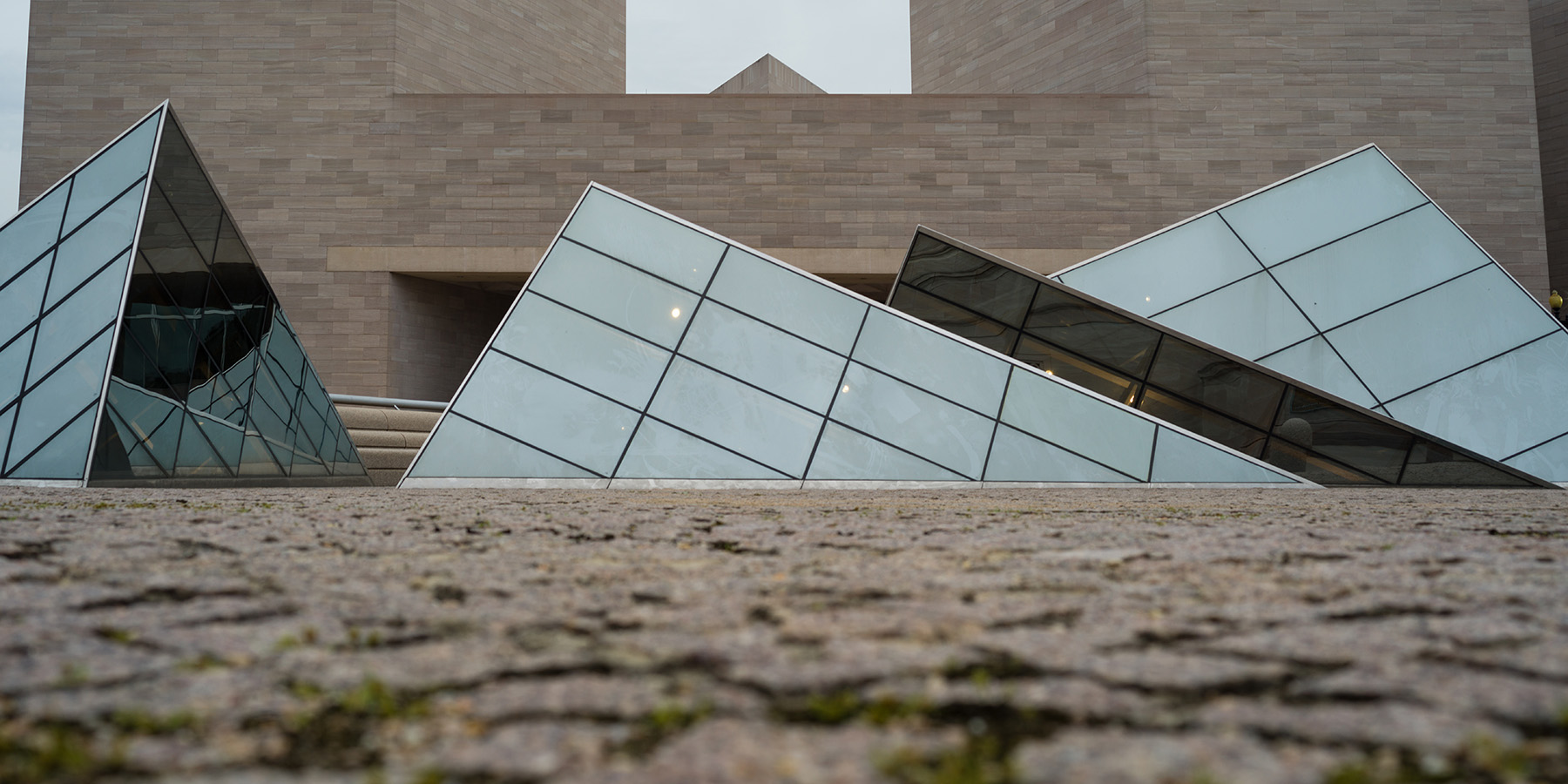Dana Goodridge
Art and Architecture in Response: East Building, National Gallery of Art

J. Carter Brown and I. M. Pei in Alexander Calder’s studio, Saché, France. Courtesy of the National Gallery of Art, Washington, DC, Gallery Archives
We can see art and architecture responding to each other in interesting ways closely within a gallery setting. In fact, the purpose of a gallery’s architecture is to display and house art, and this creates an interesting space where the structure of the building itself can be both a neutral space and one that responds to works of art specifically commissioned for it. Looking at the human aspect of this symbiotic relationship, we can observe the connection between artist and architect, as well as explore how people respond with great curiosity to what they created, whether separately or together.
For my tour, I discussed the National Gallery’s East Building as an object and architect I. M. Pei’s role in creating it. I then explored two artworks that interact with the architecture of the building: Untitled (1976) by Alexander Calder and Multiverse (2008) by Leo Villareal. The Calder mobile is a work of art that was specially commissioned during the construction of the East Building, while Villareal’s multimedia work of art was embedded seamlessly into the existing architecture of the building. Although these works of art respond to the architecture of the East Building in different ways, it is clear that when art and architecture engage in a dialogue, a spectacular space is created for people to enjoy.
Architecture major, Howard University
Howard University Undergraduate Intern, 2022–2024
